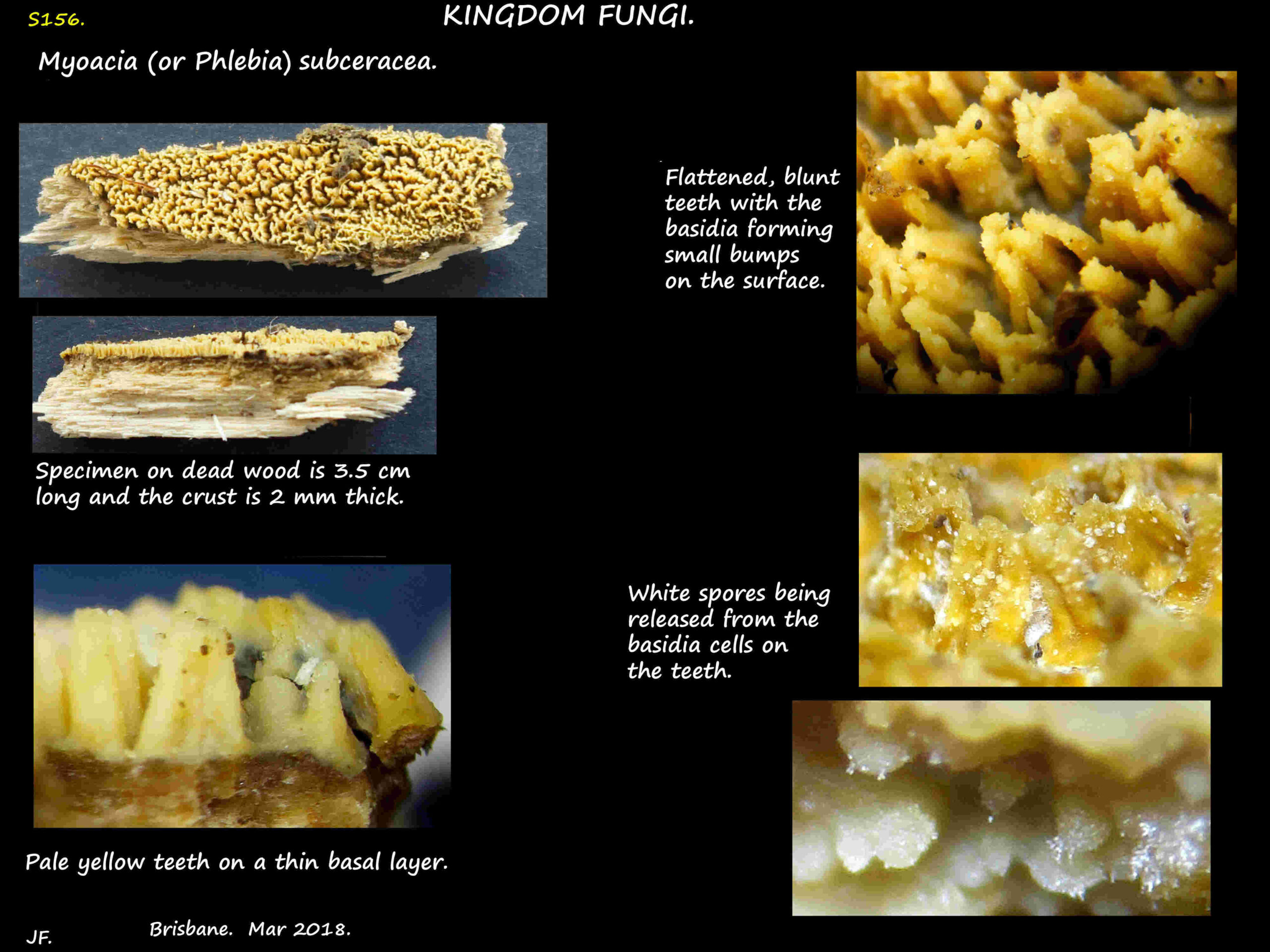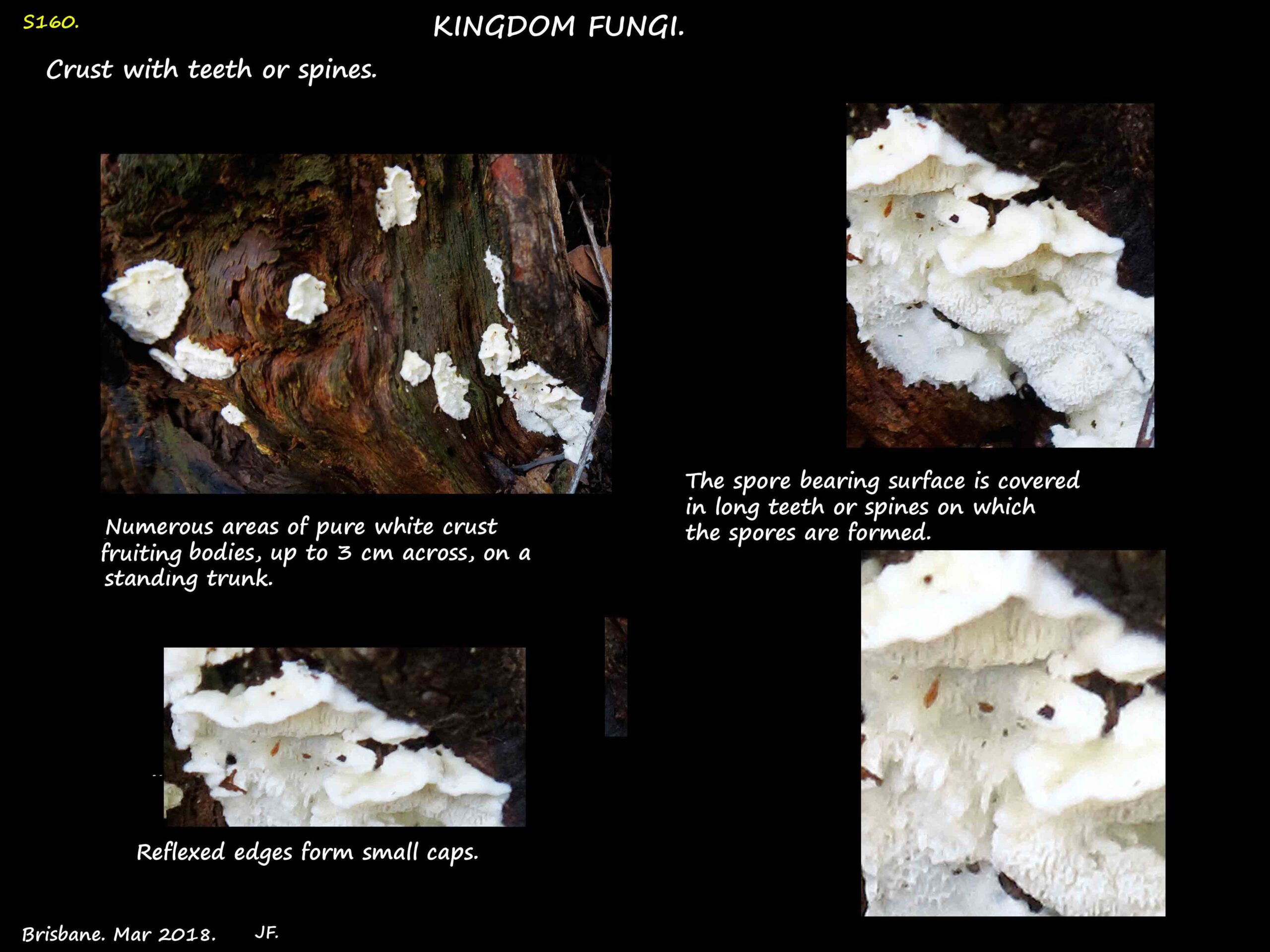Tooth or spine fungi & Myoacia.
Fruit bodies with the spores on tooth-like or spine-like projections.
Classification appears confusing with multiple synonyms, name changes, moves etc.
Orders containing tooth fungi include Auriculariales, Cantharellales, Gomphales, Hymenochaetales,
Polyporales, Russulales, Thelephorales and Trechisporales.
Genera include Hydnum, Hydnellum, Hydnochaete, Hydnophlebia, Hyphodontia, Hydnophlebia,
Mycoacia, Phanerochaete, Phlebia, Phellodon, and Steccherinum.
They come in a variety of shapes.
- Cap and stalk or stipitate tooth fungi.
- Crusts – the resupinate tooth fungi.
- Shelving brackets and occasionally other forms.
Typical looking mushrooms with teeth instead of gills.
Flat crusts from a few mms to 1 m in size with teeth that can be 1 mm or less.
A crust fungus with split or irregular pores may resemble a toothed one e.g. Irpex lactrus.
Myoacia (or Phlebia) subceracea.
Basidiomycota > Agaricomycetes > Polyporales > Family Meruliaceae.
A crust fungus forming flat patches on the underside of rotting wood.
The waxy, yellow teeth have blunt tips and are sometimes flattened.
They taper towards the tips so the spores can easily fall off.
The spore bearing basidia are on the surface of the teeth.
Spores are white.
There are a number of similar species including Myoacia uda, the Pale-Yellow Tooth,
which is paler and has teeth with pointed tips.
J.F.



